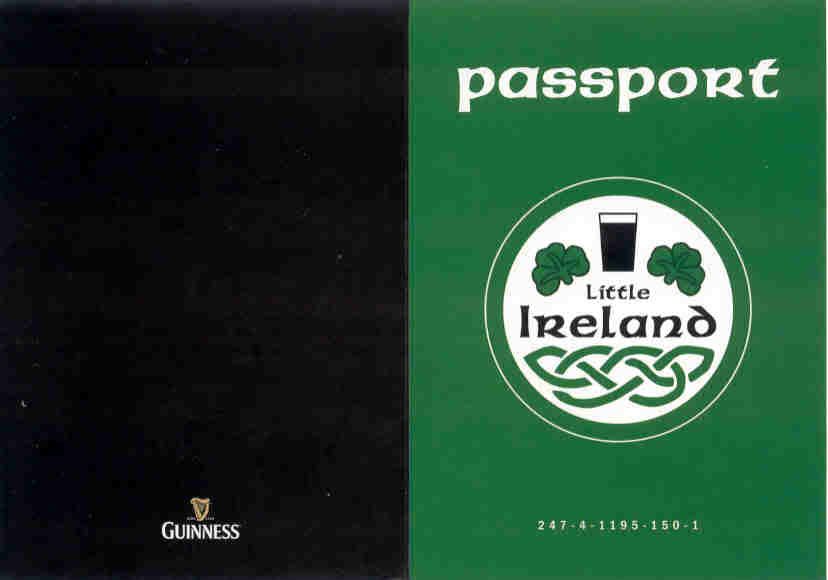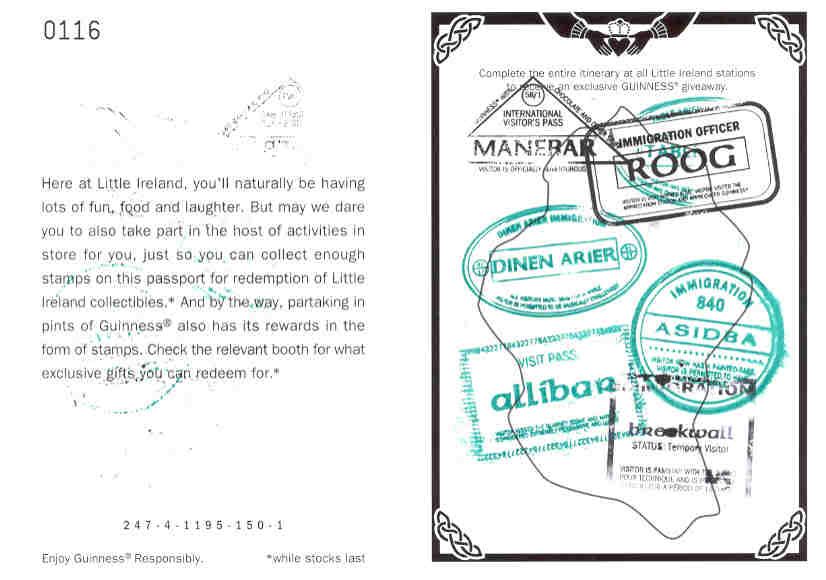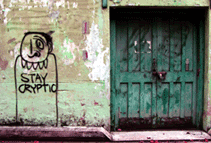72 full hoursAnyway, here's an interesting article i found regarding Jesus's crucifixion and resurrection.
Article: Three Days and Three Nightssource:
http://www.wonderfulworldtomorrow.org/article.htmlOn one of the many occasions when Jesus was challenged by Scribes and Pharisees, He was asked to offer them proof of His Messiahship: they wanted him to show them a miraculous sign. Answering His critics, Jesus first chastised them, pointing out they were part of “an evil and adulterous generation” that required signs, and then He turned to them and said:
"no sign will be given to it (the present generation) except the sign of the prophet Jonah. For as Jonah was three days and three nights in the belly of the great fish, so too will be the Son of Man be three days and three nights in the heart of the earth." (Matthew 12: 39-40)
This was the sign Christ was willing to give the recalcitrant Pharisees: the sign involving His death, which they were seeking, and His resurrection - something they would later deny. It was the true sign He was the Messiah, their Savoir. The miraculous healings they had already witnessed could be reasoned away, but His resurrection from the dead after three days and three nights in the tomb, Never! This was ultimately the proof Christ would offer to those who doubted Him, and it was he evidence countless generations of Christians would point to as proof of His divinity.
Given the importance the miracle of His resurrection, Christ prophesied using a precise timetable showing when He would rise from the dead. Strange as it may seem, however, modern Christianity commemorates this event on a day when it would not have happened, Easter Sunday. In their ignorance, Christains deny the very sign He gave them as evidence that He is their Messiah. They do not understand Christ could not have been resurrected on their popular holiday.
How long was Christ in the tomb?No human witnessed Christ's resurrection. The only record we have of it is the one contained in the Bible. Thus the answer to when Christ was resurrected must come from inspired scripture otherwise we are simply speculating. A close look at Jonah's confinement in the belly of the great fish should give us the answer.
Most would agree that the three days and three nights Jonah spent in the fish's belly constitute a period of seventy-two hours. The day time period is generally understood to mean a twelve-hour period of light, as confirmed by Christ in John 11:9-10 :
John 11:9-10: 9 Jesus answered, "Are there not twelve hours in the day? If anyone walks in the day, he does not stumble, because he sees the light of this world. 10 But if one walks in the night, he stumbles, because the light is not in him." NKJVIf we accept that Christ was working from the principle of a day being twelve hours, and a night being twelve hours, then three days and three nights constitue a seventy-two hour period.
If one needs to find further evidence for this point the account of Genesis 1: 4-13 provides it. Here we see again, that God divided the day into two halves:
"[God] divided the light from darkness. And God called the light Day, and the darkness he called Night. And the evening [darkness] and the morning [light] were the first day ....And the evening [darkness] and the morning [light] were the second day .... And the evening [now three periods of darkness called night-- three nights] and the morning [now three periods of light called day -- three days] were the third day" (Gen. 1:4-13)From the text above one can see that three full days are equal to three night (darkness) periods and three (light) periods, constituting a full seventy-two hours.
It may seem a bit trivial to spend so much time defining a day and a night; nevertheless, proponents of an Easter resurrection have based the accuracy of the timeline on numerous and 'innovative' ways of counting. The truth is that the three days and three nights Christ gave as evidence of his Messiahship are exactly what any rational person would believe them to be, a period of seventy-two hours.
Good Friday to Easter SundaySince Christ was to be in the grave for seventy-two hours, it becomes immediately apparent that the Good Friday to Easter Sunday timeline celebrated by most Christians today is flawed. If Christ was killed on the afternoon of "Good Friday" as most Christians believe, there is no way He could have risen on the morning of Easter Sunday. It is impossible to squeeze seventy-two hours into that scenario when we consider what the scripture has to say on the subject:
"And he began to teach them, that the Son of man must suffer many things, and be rejected of the elders, and of the chief priests, and scribes, and be killed, and AFTER three days rise again.” (Mark 8:16)Any way you count it, Sunday morning can not be three full days from Friday afternoon, unless you want to redefine a day and night as parts of "three days and nights", which does not square at all with Christ's clear teaching. However, this is the explanation and justification for celebrating Christ's resurrection on Easter Sunday morning given by most theologians today.
When was Christ Crucified?In order to get this whole matter straightened out, it is perhaps best to begin first by determining when Christ was crucified. The Scripture tells us that the crucifxion took place on the day referred to as "the preparation day". According to Jewish practice this was the day preceding a "Sabbath" (Matt. 27:62; Mark 15:42; Luke 23:54). As we already know, a day is counted from evening to evening (Lev. 23:32, Genesis 1:19), not from midnight to midnight as is common today.
The Bible further records that Jesus cried out from the stake soon after "the ninth hour". This would be three o'clock in the afternoon by modern reference. Christ was crucified on the "preparation day" before the ensuing High Sabbath that began the festival of the Unleavened Bread (Matt. 27:46-50; Mark 15:34-37; Luke 23:44-46), which immediately followed the day of the Passover. By Jewish tradition, all criminals had to be taken down from the stake before the festival began, before the sun set signalling the High Day had begun (Matt. 27:57; Luke 23:52-54; John 19:42).
We read in the book of John: "There laid they Jesus, therefore, because of the Jews' preparation day for the sepulcher was nigh at hand". According to the laws observed by the Jews, all dead bodies have to buried before the beginning of a Sabbath or festival High Day. Hence Jesus was buried before sunset on the same day He died. It is clear that Christ's body was buried in the late afternoon sometime between 3pm and sunset on the preparation day preceding the feast of Unleavened Bread, as these scriptures clearly indicate.
Many who know little of "Judaism" are confused by reference to a "preparation day", believing it refers only to Friday when Jews traditionally prepare for the weekly Sabbath observance. Lacking knowledge of the Passover-Feast of Unleavened Bread, they do not make distinction between the "preparation day" of the weekly Sabbath and the preparation day, which precedes a Holy Day or High Sabbath. It is important to understand the Bible makes reference to two types of Sabbaths. The first is a weekly Sabbath, and the second is a Holy Day Sabbath or "High Sabbath" which occurs annually and can fall on any day of the week in connection with the Festivals outlined in Leviticus 23 (See Leviticus 16:31; 23:24, 26-32,39).
The book of John gives us a clear reference to what kind of Sabbath followed the day of Christ's crucifixion, "Now it was the Preparation day of the Passover (The whole period from Passover through the Festival of Unleavened Bread was referred to as the Passover, but the High Days occur at the beginning and the end of the Feast of Unleavened Bread)…” (John 19:14 NKJ). It was the preparation day before a High Day, not the weekly Sabbath. Thus the crucifixion did not necessarily take place on Friday.
Putting the Story togetherWhat we do know is that Christ was crucified in the late afternoon and buried before the evening began. We also know that Christ had to be in the tomb for seventy-two hours, which is to say, three days and three nights; and thus He must have resurrected immediately at the end of the seventy-two hours, which would have been at the time of day we would call the late afternoon, before sunset. Finally we know that the day He died was the day of preparation for the annual "High Day" which could have fallen on any day of the week. If we carefully use these facts, we can clearly understand when Christ was crucified.
The first people to visit Christ's tomb and report He was recurrected were some of the women disciples including Mary Magdalene who showed up early on the FIRST day of the week, which according to the Jewish calendar would be Sunday (John 20:1). When Mary and the other women arrived, they saw a tomb that had already been opened (Mark 16:2-4). Many Christians read into this account the false premise that this meant Christ was recurrected Sunday morning, but in fact that is impossible. For Christ to have been resurrected on Sunday, he would have had to rise in the late afternoon in order to complete the seventy-two hour life cycle (Remember, since he was buried just before sunset, he would have to rise at the same time seventy-two hours later). John 20:1 only tells us that by Sunday morning he had already risen:
"Now the first day of the week Mary Magdalene went to the tomb early, while it was still dark, and saw that the stone had been taken away from the tomb.” (John 20:1 NKJV)What Mary Magdalene and the others found was a tomb that was already empty. Since we know Christ had to be resurrected before sunset (72 hours after he was buried), it is clear that at the end of the seventy-two hours period came before Sunday even began, before the sun set on the preceding Sabbath day. This means He rose late Saturday, which fulfilled perfectly the sign he gave the recalcitrant Pharisees: the sign of Jonah's literal three days and three nights in the belly of the fish!
What day of the week did the Crucifixion fall on?In order to discover the actual day of the week Christ was crucified on, we must count back seventy-two hours from just before the sunset ending the Saturday Sabbath observance. Counting backward we come to Wednesday, just before sunset! This means that Christ died on a Wednesday afternoon, the preparation day for that year's High Sabbath that began the Feast of Unleavened Bread. He was placed in the tomb just before sun set.
There are numerous other biblical scriptures, even prophetic points, that support this time-line. However, many will wonder why it matters at all. The short answer to this is that the true timeline of Christ’s death shows that the celebration of Good Friday and Easter Sunday do not have any basis in historical fact, and are in no way connected to Christ’s true sacrifice. Moreover, understanding the truth regarding Christ’s resurrection reassures us that His proof of His being the Messiah was true. Christ does not require us to understand complex mathematical formulas or reason around the obvious in order for us to prove who He was. In fact, all we have to do is read the four separate accounts that tell us when and how the crucifixion happened (Matthew, Mark, Luke, and John), count three days and three nights, and then we see the resurrection occurred when and how Christ told us it would.
so there you have. Jesus' crucifixion took place on Wednesday afternoon, and he rose on Saturday afternoon.




